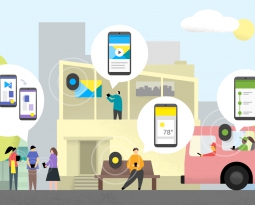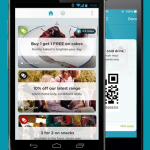Purchasing a set of beacons for your retail space or venue is an exciting step into the future of personalized, location-based marketing. When you buy beacons, you are committing to provide a more exciting and interactive journey in your physical space that gives modern consumers the digital experiences they crave.
As with any new change, expect your beacon program to endure some minor growing pains as you get it off the ground. You will have to figure out the optimal way to configure your program so that the front end â the consumer experience â and the back end â the data gathering and informed decision-making â work hand in hand towards a mutual goal.
Here are some scenarios to expect as you test the waters and adapt to the rich opportunities beacons can offer:
Redefining Goals and How to Measure Them
Your first step before even buying beacons is to decide exactly what you want to get out of them. Do you want to highlight a particular product in the store with information or offers? Do you want to increase the average basket size of customer orders? Do you want customers to interact with branded social media while in-store in a way that drives foot traffic and omnichannel engagement?
All of these intentions are laudable, but your brand may discover that the beacons can be a better fit in a slightly different application or that the way you measure success of the program shifts over time. At first, a brand will want to monitor how many people actually notice and engage with the beacons as an indication of how successful a program is. Later, the brand will likely begin measuring how many of these device interactions are leading to the desired effect.
Over time, your benchmarks and engagement targets will likely change as you mold the program to best suit your needs.
Experimenting with Placement and Content
Similar to the point above, businesses will rarely find a âperfect fitâ right off the bat with the way beacons are used. Many experts suggest starting with a pilot program by installing a few beacons near the most prominent store displays. The ânewnessâ and isolated use of the product can encourage customers to try out the beacon as an element of their store visit. Retailers can see how beacons fare in these isolated spots, especially how customers respond to the content they see.
Later, stores will usually spread beacons throughout the space in an effort to see how different sections fare. The store will likely begin changing out the types of content offered, from information to offers to relevant promotions like a prize giveaway for buying particular products. Variables such as these can help them measure how different sections and content affect customer engagement and overall goal progress.
Realizing That Not All Beacon Platforms Are Created Equal
When modifying and swapping out beacons in the processes outlined above, brands will discover that not every beacon management platform will easily accommodate changes in location or content offered. The best beacon platform is one that is simple to adjust. It should also allow the devices to come into play with an overarching marketing strategy that utilizes other customer touch points like digital signage, social media posting and direct marketing.
Digital Social Retail makes all of these functions easy to manage from a single dashboard interface. Store managers can access the platform from anywhere in the world using the cloud. All customer interactions produce data points that will be compiled in easy-to-digest analytics and statistical reports that make tracking progress and deciding where to make adjustments a snap. Visit our products page to find out just how indispensable a convenient digital convergence platform can be.










